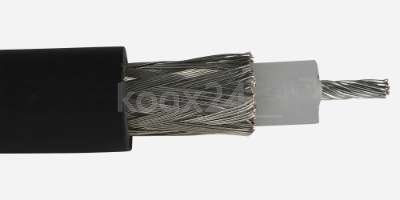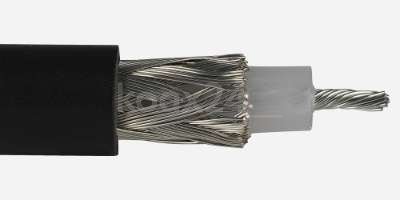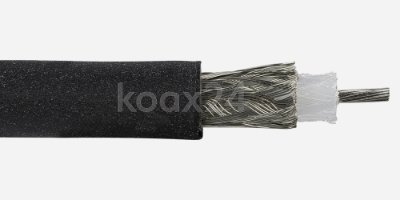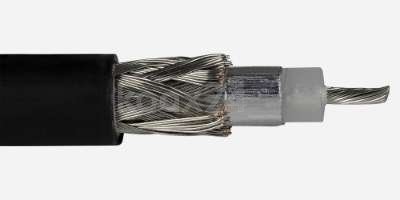Coaxial cable with 5 mm outer diameter
Here is an overview of the most important cables with an outer diameter of 4.95 mm:
| Image cable |  |  |  |  | ||
| Designation | RG 058 C/U | RG 58 C/U | RG 58 PUR | arnoflex 58 LSNH | ||
| Article number | 050240 | 050244 | 050168 | 050310 | ||
| Datasheet pdf | ||||||
| Shield type | single shielded | single shielded | single shielded | double shielded | ||
| Technical data – Cable structure | ||||||
|---|---|---|---|---|---|---|
| Outer diameter |
Ø 5 mm
|
Ø 5 mm
|
Ø 5 mm
|
Ø 5 mm
| ||
| Sheath material |
PVC
|
PVC
|
PUR
|
FRNC / LSNH
| ||
| Sheath colour | black | black | black | black | ||
| Diameter dielectric [Ø/mm] |
2.95
|
2.95
|
|
2.95
| ||
| Dielectric |
PE
|
PE
|
PE
|
PE
| ||
| Inner conductor [Ø/mm] | Ø 0.9 | Ø 0.9 | Ø 0.94 | Ø 0.9 | ||
| mm | 19 x Ø 0.18 | 19 x Ø 0.18 | 19 x Ø 0.18 | 19 x Ø 0.18 | ||
| Inner conductor material | Tinned stranded copper | Tinned stranded copper | Tinned stranded copper | Tinned stranded copper | ||
| Electrical values | ||||||
| Impedance |
50 Ω
|
50 Ω
|
50 Ω
|
50 Ω
| ||
| Frequency max. [Ghz] |
2
|
1
|
1
|
3
| ||
| Capacitance [p/m] |
100
|
100
|
100
|
67
| ||
| Screen dimension [dB/m] |
57
|
57
|
38
|
90
| ||
| Max. Voltage[V] |
|
|
2000
|
| ||
| Halogen-free | – | – | – | ✓ | ||
Non-magnetic | ✓ | ✓ | ✓ | ✓ | ||
| Attenuation values at different frequencies | ||||||
| 400MHz [dB/m] |
0.3
|
0.3
|
0.3
|
0.28
| ||
| 1000MHz [dB/m] |
0.52
|
0.52
|
0.52
|
0.48
| ||
| 2000MHz [dB/m] |
|
|
| 0.73 | ||
| Other parameters | ||||||
| Temperature max.°C |
70
|
70
|
80
|
70
| ||
| Temperature min.°C |
-30
|
-30
|
-40
|
-30
| ||
| Weight kg/m | 0.037 | 0.04 | 0.038 | 0.041 | ||
| Further information | ||||||
| Infos | Link | Link | Link | Link | ||
| Wire and cable ready assembled | Link | Link | Link | Link | ||
| Cable comparison | Link | Link | Link | Link | ||
Difference between RG 058 and standard coaxial cable:
The RG 058 is a 5.00 mm thick, low-cost coaxial high-frequency cable.
Simply shielded and suitable for the vast majority of applications, such as test leads and antennas.
The conductor is insulated from the shielding by the dielectric and is located in the centre of the cable. The geometry must be adhered to very precisely. If a coaxial cable is bent to a radius smaller than the permissible bending radius, the electrical values are no longer maintained and the cable can no longer be used for certain applications.
Comparison of RG58 with other cables of similar diameter: Link